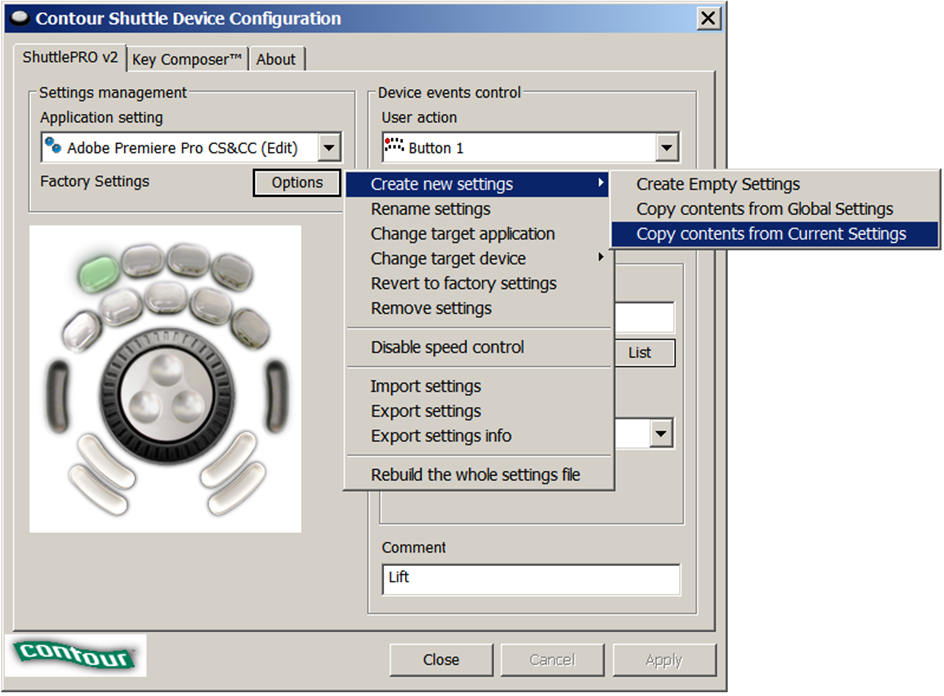Reset Preferences Adobe Media Encoder Wikipedia
- Adobe Media Encoder Not Installed
- What Is Adobe Media Encoder
- Adobe Media Encoder 2020 Crack
- Reset Preferences Adobe Media Encoder Wikipedia 2017

- Adobe Acrobat is a family of application software and Web services developed by Adobe Inc. To view, create, manipulate, print and manage files in Portable Document Format (PDF). The family comprises Acrobat Reader (formerly Reader), Acrobat (formerly Exchange) and Acrobat.com.The basic Acrobat Reader, available for several desktop and mobile platforms, is freeware; it supports viewing.
- I backup those folders including its sub folders on a daily basis to easily restore PPro's Preferences, Keyboard Shortcuts, Presets from Adobe Media Encoder when needed: C: Documents and Settings User Name Application Data Adobe Premiere Pro 2.0. If you want to back up your own Custom Workspaces: C: Documents and Settings User Name My documents.
- Later) Intel® Core™ processors and Intel Graphics enabled, and hardware-accelerated H.264 and HEVC. Encoding on Mac OS 10.13 systems with supported hardware. On supported systems, Hardware Encoding can be selected as an option in the Encoding Settings. Section of the Export Settings dialog. If the specified combination of Export Settings is not.


FAQ:Where is the preferences file? You can use the Windows file search, if necessary. You may need to “show hidden files” first. See the Windows Help and Support for details.
Adobe Media Encoder Not Installed

What Is Adobe Media Encoder

Adobe Media Encoder 2020 Crack
Update After Effects and Adobe Media Encoder to the latest version, or make sure that both the applications are of the same version. For example, if you are using After Effects 2019, make sure to use Adobe Media Encoder 2019.
- Add the composition to Adobe Media Encoder from the After Effects Render Queue.
- Choose Composition > Add to Render Queue. From the Render Queue, click Queue in AME.
In Adobe Media Encoder, select Media Encoder CC > Preferences > General and turn off Enable Parallel Encoding.
- In Adobe Media Encoder, select Media Encoder CC > Preferences > General.
- Under Video Rendering, change the Renderer to Mercury Playback Engine Software Only, and click OK.
- In Adobe Media Encoder, select Media Encoder CC > Preferences > General.
Reset preferences for Adobe Media Encoder. Make sure that Adobe Media Encoder and After Effects are closed in your machine (while following the steps).
macOS
- Quit Adobe Media Encoder and After Effects.
- Open the Finder, hold Option, and click Go on the menu bar.
- Click Library and navigate to Preferences > Adobe.
- Rename the Adobe Media Encoder folder to Old_Adobe Media Encoder.
- Close the window and navigate to Documents > Adobe. Rename the Adobe Media Encoder folder to Old_Adobe Media Encoder.
Windows
- Open the Run dialog (Win+R) and type %appdata%.
- Open the Adobe folder, and rename the Adobe Media Encoder folder to Old_Adobe Media Encoder.
- Close the window and navigate to Documents > Adobe. Rename the Adobe Media Encoder folder to Old_Adobe Media Encoder.
Clean installation for Adobe Media Encoder. For more details on how to clean installation, see Use the Creative Cloud Cleaner Tool to solve installation problems.
Reset Preferences Adobe Media Encoder Wikipedia 2017
Update After Effects and Adobe Media Encoder to the latest version, or make sure that both the applications are of the same version. For example, if you are using After Effects 2019, make sure to use Adobe Media Encoder 2019.
- Add the composition to Adobe Media Encoder from the After Effects Render Queue.
- Choose Composition > Add to Render Queue. From the Render Queue, click Queue in AME.
In Adobe Media Encoder, select Media Encoder CC > Preferences > General and turn off Enable Parallel Encoding.
- In Adobe Media Encoder, select Media Encoder CC > Preferences > General.
- Under Video Rendering, change the Renderer to Mercury Playback Engine Software Only, and click OK.
- In Adobe Media Encoder, select Media Encoder CC > Preferences > General.
Reset preferences for Adobe Media Encoder. Make sure that Adobe Media Encoder and After Effects are closed in your machine (while following the steps).
macOS
- Quit Adobe Media Encoder and After Effects.
- Open the Finder, hold Option, and click Go on the menu bar.
- Click Library and navigate to Preferences > Adobe.
- Rename the Adobe Media Encoder folder to Old_Adobe Media Encoder.
- Close the window and navigate to Documents > Adobe. Rename the Adobe Media Encoder folder to Old_Adobe Media Encoder.
Windows
- Open the Run dialog (Win+R) and type %appdata%.
- Open the Adobe folder, and rename the Adobe Media Encoder folder to Old_Adobe Media Encoder.
- Close the window and navigate to Documents > Adobe. Rename the Adobe Media Encoder folder to Old_Adobe Media Encoder.
Clean installation for Adobe Media Encoder. For more details on how to clean installation, see Use the Creative Cloud Cleaner Tool to solve installation problems.